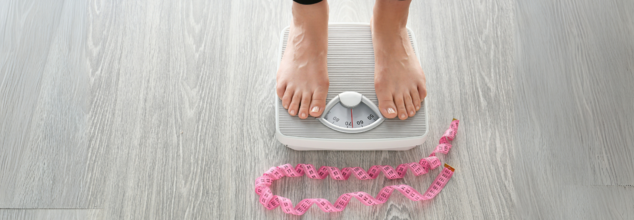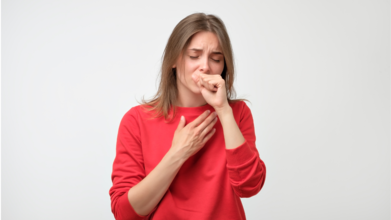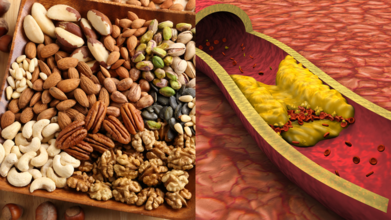- Health Conditions A-Z
- Health & Wellness
- Nutrition
- Fitness
- Health News
- Ayurveda
- Videos
- Medicine A-Z
- Parenting
- Web Stories
Over 35? Don’t Ignore This 'Controllable' Breast Cancer Risk Factor

Credits: Canva
Breast cancer is among the most common cancers in women globally, and in the United States alone, the statistics tell a sobering tale- one in every eight women will be diagnosed with breast cancer during her lifetime. This is an average lifetime risk of 12.5% but for other women, especially those with a strong family history or genetic mutations, that risk becomes exponentially more likely to reach a 20% lifetime risk or more.
Knowing your personal risk is not only helpful it's possibly life-saving and though genetics and family history play large roles in breast cancer, a new emerging body of research identifies a modifiable risk factor many women over 35 may be ignoring- weight gain in midlife.
As women approach their late 30s and early 40s, hormonal changes, lifestyle changes, and metabolic changes all come together. Although these are natural changes, how they are dealt with can make a huge difference in long-term health, particularly breast cancer.
A new study published in Cancer Biology & Medicine has established a definite correlation between weight gain after the age of 35 and a highly increased risk of breast cancer. Scientists discovered that women who increased more than 10 kg (approximately 22 pounds) over age 35 had a 41% greater risk of having breast cancer. Women who were premenopausal were most at risk: those who increased 5 to 9.9 kg (11 to 22 pounds) had an 89% higher risk, and those who increased more than 10 kg over twice their risk.
The large-scale longitudinal study followed close to 73,000 Korean women, tracking weight changes across five stages of life. The aim was to examine how changes in body mass index (BMI) influenced breast cancer risk, particularly during hormonal transition periods such as perimenopause and menopause.
What was striking was the V-shaped association between weight gain and risk of cancer. Women who gained weight at a moderate but steady rate — 0.25 to 0.49 kg (0.55 to 1.08 pounds) per year — were at the greatest risk. This indicates that even slow weight gain, commonly viewed as innocuous, can have serious health consequences in the long run.
Do Hormones Cause Weight Gain?
But why is weight gain after age 35 such a strong risk factor? The answer has to do with the way that fat tissue works within the body. When women reach menopause, estrogen levels plummet, and the body responds by making estrogen in fat tissue. Too much fat, particularly around the belly, can lead to an estrogen-rich environment — a hormone associated with the growth of hormone-receptor-positive breast cancer.
In addition, weight gain can cause an increase in inflammation, insulin resistance, and other metabolic derangements, all of which could contribute to tumor growth.
Why it is Important to Watch Your Weight As Your Age?
It's significant to realize that not all risk is due to lifestyle. There are a few other high-risk categories:
Family history: A mother, sister, or daughter who has had breast or ovarian cancer — particularly under the age of 45 — raises your risk.
Genetic mutations: Having the BRCA1 or BRCA2 gene mutation may increase your lifetime risk to up to 85%.
Dense breast tissue: Denser breasts contain more gland and connective tissue than fatty tissue, making cancer more difficult to identify and very slightly more likely to develop.
Previous abnormal biopsy: Women with a past history of atypical hyperplasia or other precancerous cells are at higher risk.
Radiation exposure: Women who got chest radiation as children (e.g., for lymphoma) also have higher risks.
Can Breast Cancer Be Prevented?
Though we can't alter our genetics or family history, we can control our weight and lifestyle. The results of this research are not only theoretical — they're an appeal to action for women, physicians, and public health experts.
Dr. Daehee Kang, senior author of the study, underscored the significance of identifying midlife as a "critical window" for breast cancer prevention. "By tackling weight gain in mid-adulthood," Dr. Kang said, "we might be able to significantly cut breast cancer risk and change how we think about cancer prevention efforts for women."
What You Can Do Starting Today
If you're 35 or older, it's time to take control of your breast health through proactive measures that can have a significant impact. Begin by sitting down with your doctor for an open and honest discussion of your unique breast cancer risk, particularly if you have a family history or other identified risk factors. Knowing your own personal risk is the key to developing a prevention plan that's right for you.
Also crucial is being aware of your Body Mass Index (BMI), which between 18.5 and 24.9 is considered healthy, and closely monitoring any steady increase is crucial, as more research connects weight gain after age 35 with increased risk of breast cancer. Adding regular exercise—only 150 minutes a week of moderate exercise—can go a long way toward maintaining a healthy weight and lowering body inflammation.
Nutrition is important too. Eating anti-inflammatory foods, reducing sugar intake, and staying away from processed fats are all food choices that promote general wellness and can decrease risk of cancer. And don't miss your routine checkups. Mammograms and clinical breast exams are important weapons for detection early, while breast cancer is most curable and rates of survival are highest.
While it's not possible to prevent all instances of breast cancer, a great number of risk factors—most importantly, weight gain past your mid-30s—are reversible. Through vigilance and steady action, you can significantly lower your risk of the disease. Because when it comes to breast cancer, knowledge isn't power, it's protection.
A 4-Step Science-Backed Routine That Works for Every Skin Type

There was a time when skincare felt like a competitive sport. People layered acids, scrubbed their faces raw, and measured success in stings, peels, and redness. But times are changing. A new, science-backed wave is sweeping in, one that values results without leaving your skin feeling like it has been through a survival reality show.
From Shelf Overload to Skincare Simplicity
For years, we’ve been told more is better. More products, more steps, more actives, until our bathroom shelves looked like mini-pharmacies. But skin, much like us, thrives in balance. Aggressive routines may deliver quick wins, but they often come with side effects like irritation, dryness, or breakouts that weren’t invited to the party.The modern approach is a gentler, more measured one: using well-formulated products that are kind to the skin barrier but still pack enough punch to make a visible difference. And the best part? You only need a few steps, not a 12-item shopping list.
The Four Steps That Actually Work
Malini Adapureddy, Founder of Deconstruct Skincare, swears by a routine that’s simple enough to remember before coffee and effective enough to see results in weeks. Designed for Indian skin and climate, this four-step method covers the essentials: cleansing, treating, moisturising, and protecting.
Step 1: The Clean Slate
Every story starts somewhere, and for your skin, that’s cleansing. But the goal isn’t to strip your face like it’s a frying pan that’s just seen a masala spill. A gentle oil-control face wash with salicylic acid and niacinamide is the ticket. Salicylic acid slips into pores to keep them clear, while niacinamide calms and balances.Step 2: The Targeted Glow Shot
Once the canvas is prepped, it’s time for the serum stage. Enter a 10% vitamin C serum with 0.5% ferulic acid. Vitamin C is your radiance best friend, helping to fade pigmentation and even out skin tone, while ferulic acid boosts its stability and antioxidant power. Together, they help defend against environmental stressors and bring your complexion back from the land of dull.Unlike some actives that feel like they’re burning through your soul, this combination is gentle enough for daily use.
Step 3: The Barrier Hug
Moisturiser is often seen as the “optional” step, especially if you have oily skin. But hydration isn’t just about adding water; it’s about locking it in. A lightweight, oil-free moisturiser with natural moisturising factors (NMF) and panthenol keeps your skin barrier happy. It helps reduce sensitivity, supports repair, and works in harmony with your actives. And in India’s hot, humid, sometimes dusty climate, that’s a much-needed shield.Step 4: The Non-Negotiable
Sunscreen. Always sunscreen. Whether you’re outside chasing errands or inside chasing deadlines, UV damage is sneaky. It causes pigmentation, speeds up ageing, and undoes all the hard work your serum and moisturiser put in. A broad-spectrum, gel-based sunscreen keeps things light, non-greasy, and comfortable, even under makeup.Why Gentle Works Better Than You Think
There’s a myth that 'strong' means 'effective'. In reality, harsh products can damage your skin barrier, leaving it inflamed and reactive. Gentle formulations, when done right, work gradually but deeply. They’re like the friend who doesn’t shout advice but still changes your life.Consistency is the secret here. When your skin isn’t constantly fighting irritation, it can focus on repairing itself, building resilience, and looking better over time.
What Is Pulmonary Fibrosis and Why That Annoying Cough Might Be More Than Just a Cold

Credits: Canva
If you’ve been coughing for weeks, blaming it on “lingering winter sniffles” or chalking it up to “just getting older,” it might be time to step away from the cough syrup and lean in for some uncomfortable truth. Your cough could be more than a seasonal annoyance. In rare but serious cases, it could be a red flag for a life-limiting condition called pulmonary fibrosis.
What is Pulmonary Fibrosis?
In plain terms, “pulmonary” means lungs, and “fibrosis” means scarring. It’s a serious, progressive condition where lung tissue becomes scarred and stiff, making it increasingly hard to breathe.
Reportedly, there’s currently no cure. Treatments exist, but they mainly slow down the damage rather than reverse it. The sooner you get diagnosed, the better your chances of managing symptoms and that’s where spotting the signs early is crucial.
Symptoms to Watch For
- Shortness of breath (especially when climbing stairs or speed-walking to catch the bus)
Why That Cough Happens
Coughing is your body’s bouncer, booting out anything that might harm your lungs — dust, smoke, rogue crumbs, the works. The process involves your vocal cords clamping shut, then snapping open with a burst of air.
With pulmonary fibrosis, this reflex can get stuck on a loop. Coughing irritates the vocal cords, which makes you cough more, which irritates them further, a vicious cycle that can turn even a quiet cup of tea into a coughing fit.
The Four Flavours of Cough
- Acute cough – Lasts less than three weeks; often tied to infections or irritants.
Coughs can also be:
- Dry/unproductive – Triggered by things like temperature changes, dusty air, or laughing.
Who’s More at Risk?
While pulmonary fibrosis can happen to anyone, your risk might be higher if you:
- Are over 50
Managing the Cough
A pulmonary fibrosis cough often doesn’t respond to standard cough medicines. Instead, treatment usually focuses on easing symptoms and improving quality of life.
Your doc may recommend alternative medications used for chronic cough in other conditions. These don’t cure the scarring but can make the coughing less intrusive. They’ll also want to check for other contributing factors like acid reflux, sinus issues, or side effects from medication, because if those are making things worse, tackling them can help.
Everyday Coping Tricks
While you work with your doctor, you can try a few lifestyle tweaks to manage coughing fits:
- Avoid smoky, dusty, or heavily polluted spaces
Pulmonary fibrosis is rare, but catching it early can mean more treatment options and better management. Plus, you’ll finally know whether your cough is from a stubborn cold or something that needs closer attention. Your cough could be a harmless side effect of a dusty ceiling fan or it could be your body waving a red flag.
Scientist Reveals the Tiny Foods That Can Transform Your Cholesterol in Just 10 Days

If you’ve ever stared at a packet of mixed nuts wondering whether to sprinkle them over your porridge or just eat them by the handful, here’s your permission slip: go for it. According to Dr Sarah Berry, a professor at King’s College London and Chief Scientist at ZOE, nuts and seeds are not just snackable; they are good for cholesterol crunching. In fact, swap some of your less healthy fats for these nutritional powerhouses, and you could lower your cholesterol by up to 10 per cent in just 10 days. That is faster than most fad diets.
The 10-Day Cholesterol Challenge
High cholesterol often feels like one of those invisible problems, until it suddenly is not. It can quietly build up in your arteries, increasing the risk of heart attacks and strokes. But Dr Berry, during an appearance on the Zoe podcast, said that you can make a real difference in under two weeks by tweaking, not overhauling, your diet. It’s not about eating less fat; it’s about eating the right kind of fat.
And this is where most people get it wrong. “Don’t do a low-fat diet,” Dr Berry warns, calling the idea “radical” to anyone still following decades-old advice. Instead, aim for a moderate-fat diet rich in polyunsaturated and monounsaturated fats—exactly the kinds you’ll find in nuts, seeds, and certain oils.
Why Low-Fat Diets Miss the Point
It is tempting to think cutting fat will cut cholesterol, but Dr Berry explains that’s a trap. Not all fats are bad. Saturated fats, found in red meat and some processed foods, can push LDL cholesterol—often dubbed “bad” cholesterol—into dangerous territory. But polyunsaturated fats, abundant in seeds, seed oils, and many nuts, do the opposite.
Simply adding nuts to your meals, whether as a snack, salad topping, or nut butter, can slash LDL cholesterol by 5 to 10 per cent. You have to make a swap. This benefit comes from replacing “harmful” fats, like those in certain animal products and fried foods, with healthier plant-based fats.
Seeds: The Cholesterol Fighters
Sunflower seeds, flaxseeds, chia seeds—they’re all loaded with polyunsaturated fatty acids that support heart health. Stir them into yoghurt, blend them into smoothies, or scatter them over roasted veggies. You’ll barely notice the extra effort, but your arteries will thank you.
Seed oils, like sunflower and flaxseed oil, can also be smart choices in moderation, adding healthy fats to your cooking without the cholesterol-raising impact of certain animal fats.
Rethinking Dairy, Meat, and Carbs
Dr Berry isn’t out to demonise all animal products. Fermented dairy like yoghurt and cheese gets a surprising green light. These foods, she says, don’t have the cholesterol-raising effect you might expect from their saturated fat content. That’s not permission to live on brie and cheddar, but it is a reason to stop fearing your cheese board.
Red meat, however, is a different story. Packed with saturated fats, it’s a direct contributor to rising cholesterol levels. Swapping steak nights for lentil stews or chickpea curries a couple of times a week could make a noticeable difference to your numbers.
Then there’s the carbohydrate conundrum. The real trouble lies with refined carbs like white bread, white rice, and sugary snacks. These are rapidly processed by your body and can be converted into triglycerides, which worsen cholesterol profiles. But whole grains are firmly in the “good for you” column. Wholegrain bread, brown rice, oats, and quinoa can help improve cholesterol levels when they replace the refined stuff.
Building Your 10-Day Cholesterol Menu
Swap your morning white toast for porridge topped with walnuts and chia seeds. Your mid-morning biscuit could become a small handful of almonds. At lunch, toss sunflower seeds into your salad, and use olive or sunflower oil for dressing. Dinner might feature grilled salmon or chickpeas instead of steak, with a side of quinoa instead of white rice.
Why This Works So Fast
Cholesterol levels can be surprisingly responsive to dietary changes. LDL cholesterol particles are constantly being produced and cleared from your bloodstream. When you replace saturated fats with healthier fats, you improve your body’s ability to remove LDL cholesterol. Combine that with reducing refined carbs and upping your wholegrain intake, and the improvement can be measurable in just days.
Dr Berry’s advice is refreshingly realistic: no calorie counting, no extreme restrictions, just sensible swaps. It’s about building habits you can maintain beyond the initial 10 days, keeping your cholesterol low for the long haul.
Forget the idea that lowering cholesterol means bland food and joyless salads. With nuts, seeds, and the right fats, you can eat deliciously and still give your heart a health boost in record time.
© 2024 Bennett, Coleman & Company Limited

